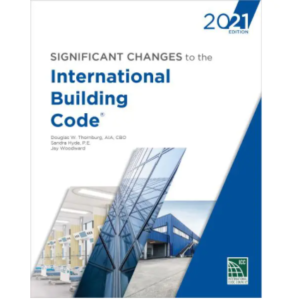ICC Makes Significant Changes to 2021 IBC Codes
The International Code Council (ICC) recently announced significant changes to the 2021 International Building Codes (IBC), according to Part 1 of a recent five-article series in the November 2021 issue “Structure” magazine. Structural engineers should be aware of these significant changes that occurred between 2018 and 2021.

In their article 2021 IBC Significant Structural Changes, authors Sandra Hyde and John Showalter, provide an overview of the changes made to IBC Chapter 16, which is the structural section of the code that includes loads. While we will only examine a small portion of the code changes in this blog post, a complete review of them can be found in the 2021 document, Significant Changes to the International Building Code, available for purchase via the ICC website.
A few of the changes regarding loads, include the following:
Construction Document Wind Zones (section 1603) – Component and cladding wind zones must now be identified in the construction documents.
Risk Categories of Assembly Spaces (section 1604) – Mixed occupancy buildings with assembly spaces are now designated as Risk Category III when the cumulative occupant load for the 300-plus-occupant assembly spaces exceeds 2,500 people.
Load Combinations (section 1605) – The strength design and allowable stress design load combinations have been deleted, while direct reference to Chapter 2 of ASCE7 has been added.
Dead Loads (section 1606)– Dead loads at the roof level have been clarified, as well as fixed service equipment concentrated loads.
Snow Maps (section 1608) – The IBC ground snow load map has been updated to provide consistency with ASCE-16, by referencing ASCE7 snow load tables for seven states with large case study areas. Those states include Colorado, Idaho, Montana, Washington, New Mexico, Oregon and New Hampshire.
Soil-Caused Uplift (section 1610) – Hydrostatic and expansive soil uplift pressures are now addressed, as they had not been mentioned before.
Rain Loads (section 1611) – Secondary drainage system rain loads have been updated to be consistent with ASCE 7.
Structural engineers can be assured that many of these new code provisions work in concert with the IBC and the ASCE 7 load standards. They should also expect several jurisdictions to begin implementing these changes very soon.
